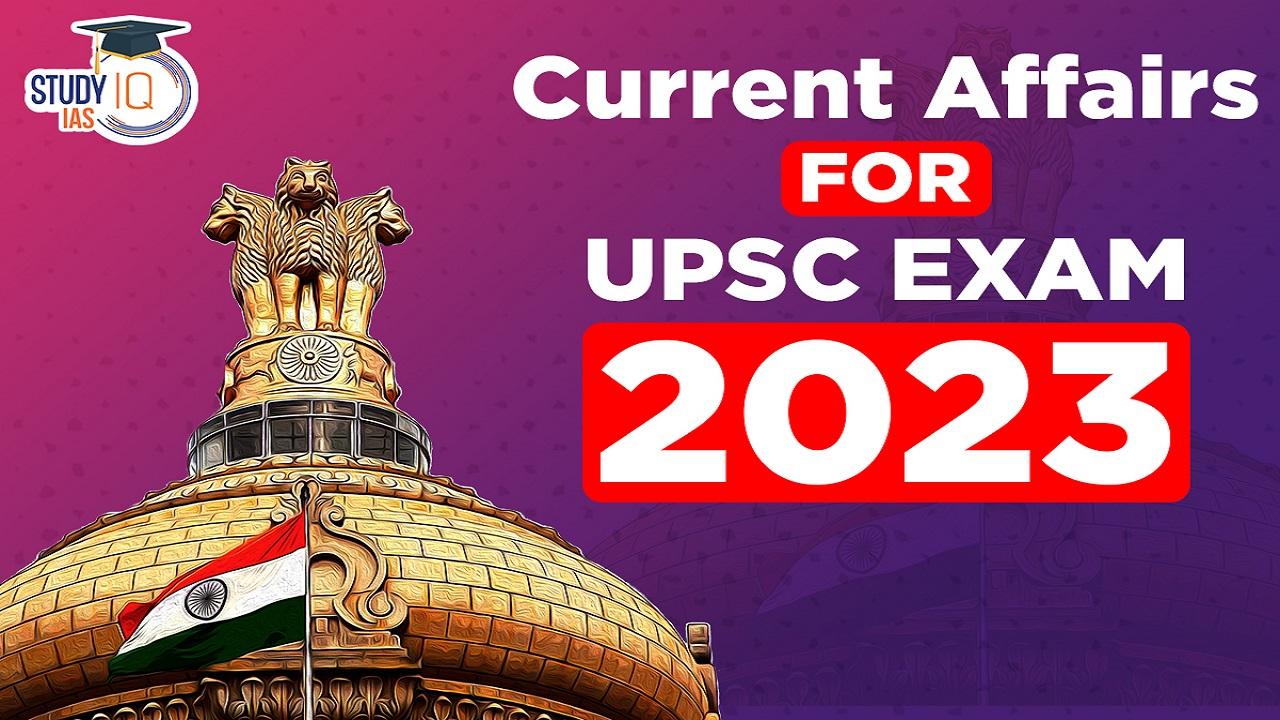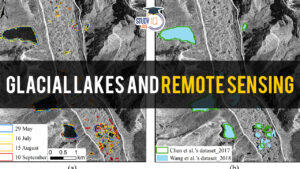Current Affairs 22nd August 2023 for UPSC Prelims Exam
Far Side of the Moon and Tidal Locking
Context: ISRO has released images of the far side of the lunar surface captured by the Lander Hazard Detection and Avoidance Camera (LHDAC) of Chandrayaan-3.
What is Far Side of the Moon?
- The “far side of the Moon,” also known as the “dark side of the Moon,” refers to the hemisphere of the Moon that is not visible from Earth.
- It is not visible from Earth because the Moon is tidally locked with Earth.
- Tidal locking means that the Moon rotates on its axis at the same rate that it orbits the Earth.
- As a result, one side of the Moon (the near side) always faces Earth, while the other side (the far side) remains hidden from direct view.
- Tidal locking is a result of the gravitational interactions between the two bodies causing a transfer of angular momentum.
- As the gravitational forces between the bodies act unequally on different parts of the orbiting body, they lead to a gradual slowing down of its rotation. This eventually leads to the body’s rotation period matching its orbital period.
- Tidal locking is not limited to the Moon; it can occur in various gravitational interactions throughout the universe, such as between planets and their moons or even binary star systems.

- About 18 percent of the far side is occasionally visible from Earth due to libration.
- In lunar astronomy, libration is the wagging or wavering of the Moon perceived by Earth-bound observers and caused by changes in their perspective.
- It permits an observer to see slightly different hemispheres of the surface at different times.
- Until now, only China has successfully landed a probe on the far side of the Moon.
- China’s Chang’e 4 mission achieved this historic feat when its lander and rover touched down on the far side of the Moon in January 2019.
- The rover, named Yutu-2 (Jade Rabbit 2), conducted scientific observations and explored the lunar surface on the far side.
- India’s ISRO attempted to land the Vikram lander from its Chandrayaan-2 mission on the Moon’s far side in September 2019, but unfortunately, the landing was not successful.
Current Affairs 21st August 2023 for UPSC Prelims Exam
Hurricanes
Context: Hurricane Hilary has been recorded as the first tropical storm to hit the Southern California in 84 years.
About Hurricanes
- Definition: A hurricane is a tropical storm rotating around an area of low pressure, which produces strong winds and heavy rain.
- They produce winds of 119 kilometers per hour (74 mph) or higher.
- Hurricanes are also known as cyclones or typhoons in different parts of the world; the term used depends on the region.
- In the Atlantic Ocean and eastern North Pacific, they are called hurricanes, while in the northwestern Pacific, they are referred to as typhoons, and in the South Pacific and Indian Ocean, they are known as cyclones.

- Categories: There are five types, or categories, of hurricanes. The scale of categories is called the Saffir-Simpson Hurricane Scale. The categories are based on wind speed. The scale ranges from Category 1 (weakest) to Category 5 (strongest), with each category representing a higher wind speed and potential for damage.
- Formation: Hurricanes form over warm ocean waters when the sea surface temperature is typically above 26 degrees Celsius (79 degrees Fahrenheit).
- Warm, moist air rises from the ocean’s surface, creating an area of low pressure.
- As the air cools and condenses, it releases heat, which fuels the development of storm.
- Features:
- Low Pressure Centre: Hurricanes have a well-defined centre of low atmospheric pressure, known as the eye.
- The eye is typically calm and clear, with light winds, surrounded by a ring of intense thunderstorms called the eyewall.
- Strong Winds: Hurricanes are known for their powerful winds that can reach sustained speeds of at least 74 miles per hour (119 kilometers per hour) or higher.
- Heavy Rainfall: Hurricanes produce heavy rainfall, which can lead to flooding, landslides, and storm surges (a rise in sea level along the coast caused by the hurricane’s winds pushing water toward the shore).
- Low Pressure Centre: Hurricanes have a well-defined centre of low atmospheric pressure, known as the eye.
Why is Hurricane Hilary Unprecedented?
- As per a 2004 report by the American Meteorological Society, the only tropical storm with hurricane-force winds believed to have hit Southern California came in 1858, along San Diego.
- Nature of the ocean: The primary reason why the Pacific coast seldom sees such tropical storms and hurricanes is the nature of the ocean itself.
- The first condition for the formation of hurricanes is that ocean waters must be above 26 degrees Celsius.
- Below this threshold temperature, hurricanes will not form or will weaken rapidly once they move over water below this threshold.
- While high temperatures are common during hurricane season along the US east coast, the west coast is much colder.
- In the Atlantic, warm, equatorial waters are transported north to higher latitudes along the US coast via the Gulf Stream.
- But along the west coast, in the Pacific, cold current steers colder water from higher latitudes toward equatorial regions. This makes hurricanes highly unlikely.
- Vertical wind shear: Another factor is the vertical wind shear, a term used to describe the change in wind speed as one travels up from the Earth’s surface — especially in the upper level of the atmosphere.
- It is an important ingredient in the formation of hurricanes as they can extend up to 16 km into the atmosphere.
- Hurricanes can’t emerge if the upper-level winds are strong as they “destroy the storms structure by displacing the warm temperatures above the eye and limiting the vertical accent of air parcels.
- Usually, wind shear in the eastern Pacific is much stronger than the Gulf of Mexico, causing less frequent hurricanes along the western coast.
- Wind steering patterns: The rarity of west coast hurricanes is the influence of wind steering patterns.
- Trade winds play a crucial role in directing hurricanes towards the east coast.
- The same winds divert them away from the west coast.
- Hurricanes originating in the eastern Pacific, often near the central Mexico coastline, generally follow a west-northwest trajectory that take them away from the coast.
Alzheimer Disease
Context: The Food and Drug Administration of US has fully approved Alzheimer’s treatment by Leqembi- a new category of medications.
About Alzheimer Disease
- Definition: Alzheimer’s disease is a brain disorder that slowly destroys memory and thinking skills and, eventually, the ability to carry out the simplest tasks.
- Alzheimer’s disease is the most common cause of dementia (a general term for memory loss and other cognitive abilities) among older adults.
- The disease is named after Dr. Alois Alzheimer.

- Cause: Alzheimer’s disease is caused by a combination of genetic, lifestyle and environmental factors that affect the brain over time.
- Symptoms: Memory loss is the key symptom of Alzheimer’s disease.
- Early signs include difficulty remembering recent events or conversations.
- But memory gets worse and other symptoms develop as the disease progresses.
- Treatment: There is currently no cure for Alzheimer’s disease, and the available treatments mainly focus on managing symptoms and slowing down its progression.
- Medications may be prescribed to enhance cognitive function or manage behavioural and psychological symptoms.
- Available Drugs:
- Leqembi: It is the first Alzheimer’s antibody treatment developed by Biogen and Eisai to receive full FDA approval.
- The antibody, administered twice monthly through intravenous infusion, targets a protein called amyloid that is associated with Alzheimer’s disease.
- Beta-amyloid is a protein which plays an important role in brain function for everyone. But in patients with Alzheimer’s disease, beta-amyloid turns toxic – clumping together and disrupting the connection between brain cells and their function. This leads to cognitive issues such as memory loss.
- The treatment by Leqembi slowed cognitive decline from early Alzheimer’s disease by 27% over 18 months during the clinical trial.
- Donanemab: It is a drug being developed by U.S.-based pharmaceutical giant Eli Lilly to treat people with early Alzheimer’s disease.
- Data on a 1,736-person trial released by Eli Lilly showed 47% of patients who were started on donanemab in the earliest stages of the disease had no disease progression on some measures after a year.
- Leqembi: It is the first Alzheimer’s antibody treatment developed by Biogen and Eisai to receive full FDA approval.
Association of Southeast Asian Nations (ASEAN)
Context: Recently, India and the ASEAN countries reached an agreement to review their free trade pact for goods and set a 2025 goalpost for concluding the review aimed at addressing the “asymmetry” in bilateral trade.
About ASEAN
- Definition: It is a regional grouping that was established on 8 August 1967 in Bangkok, Thailand, with the signing of the ASEAN Declaration (Bangkok Declaration) by the Founding Fathers of ASEAN: Indonesia, Malaysia, Philippines, Singapore and Thailand.
- Aim: It aims to promote economic and security cooperation among its members.
- Members: Brunei, Cambodia, Indonesia, Laos, Malaysia, Myanmar, the Philippines, Singapore, Thailand, and Vietnam.
- Composition: ASEAN is headed by a chair—a position that rotates annually among member states—and is assisted by a secretariat based in Jakarta, Indonesia.

- Features: If ASEAN were a country, it would be the seventh-largest economy in the world, with a combined GDP of $2.6 trillion in 2014.
- By 2050 it is projected to rank as the fourth-largest economy.
- Home to more than 622 million people, the region has a larger population than the European Union or North America.
- It also has the third-largest labour force in the world, behind China and India.
National Research Foundation
Context: Parliament recently passed the Anusandhan National Research Foundation (ANRF-2023) Bill.
About National Research Foundation (NRF)
- Definition: NRF is a new central entity aimed at funding, promoting, and mentoring scientific research in higher educational institutions across the country.
- The bill will also repeal the SERB and subsume it into NRF.
- The Science and Engineering Research Board (SERB) is a statutory body established through an Act of Parliament in 2008.
- Supporting basic research in emerging areas of Science & Engineering are the primary and distinctive mandate of the Board.
- Goal: To foster a vibrant research culture within universities and colleges, marking a new era in Indian academia.
- Modelled on the highly successful U.S. National Science Foundation, the NRF seeks to integrate the funding of scientific projects, breaking away from the siloed approach of the past.
- Origin: The concept of the NRF was first introduced by Prime Minister in 2019 at the Indian Science Congress.
- Later, the establishment of NRF was included as a significant recommendation in the National Education Policy 2020.
- Budget and Funding Model:
- The NRF is expected to have an initial budget of Rs 50,000 crore over a five-year period from 2023 to 2028.
- A significant portion of this funding – Rs 36,000 crore – is expected to come from industry contributions, establishing a novel 50:50 funding model between the Department of Science and Technology (DST) and industry.
- This unique funding structure will further bolster the foundation’s financial sustainability, ensuring continuous support for deserving research projects.
- Aims and Scope:
- The NRF’s primary objective is to bridge the gap between research and higher education in India, a dichotomy that has limited the development of the nation’s scientific capabilities.
- The foundation aims to build research capacities within Indian universities, bringing together the realms of education and research.
- In addition to promoting research in natural sciences and engineering, the NRF will also fund research in social sciences, arts, and humanities.
- Governance and Structure:
- The NRF will be administratively housed under the DST and will be governed by a 16-member board, comprising two members from DST, five from industry, one from humanities, and six experts selected based on the project under review.
- Signifying the foundation’s wide-ranging influence, the Prime Minister will serve as the ex-officio president of the board, with the Minister of Science and Technology and the Minister of Education as ex-officio vice presidents.
- The executive council, overseeing the NRF’s functioning, will be chaired by the Principal Scientific Advisor to the government of India.


 Current Affairs 27th April 2024 for UPSC...
Current Affairs 27th April 2024 for UPSC...
 Small Finance Banks, Key Features and Op...
Small Finance Banks, Key Features and Op...
 Glacial Lakes and Remote Sensing
Glacial Lakes and Remote Sensing

















